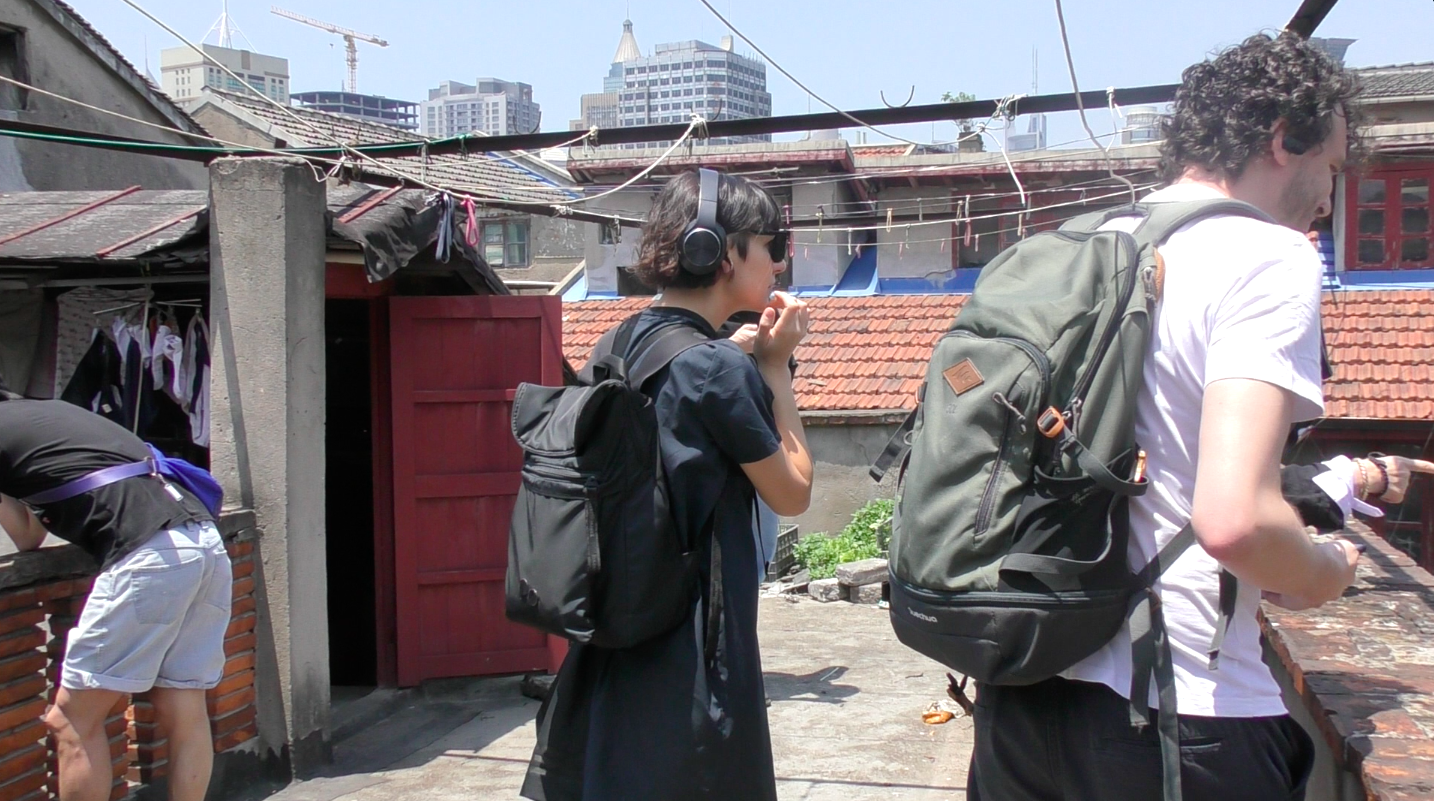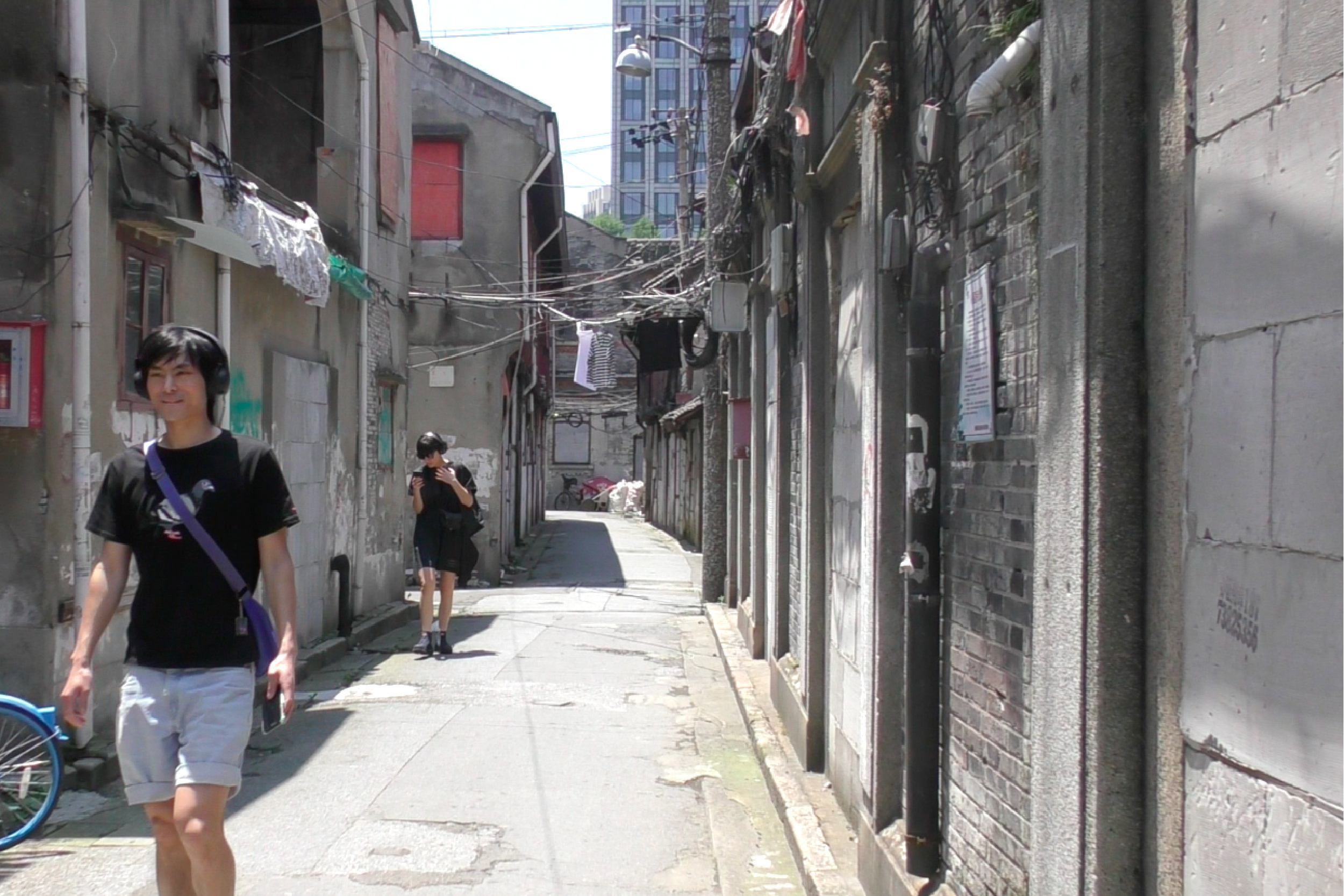-> At the Door
Soundwalk, 2021
Tools: Field recorder & microphones, Reaper, HTML/css/Javascript, Github, Adobe Illustrator, Photography
![]() https://yb924.github.io/AtTheDoor/
(Phone access is suggested.)
https://yb924.github.io/AtTheDoor/
(Phone access is suggested.)
![]()
![]()
![]()
![]()
"At the door: A Shanghai Lilong Soundwalk" offers a 360-degree acoustic exploration that captures the fluid dynamics of Shanghai's lilong neighborhoods. Over the course of 30-minute, the piece seamlessly intertwines the past with the present, the near and the far by weaving together lilong soundscape in various locations in Shanghai, and four sets of interviewees’ narrative of diversed living experience in lilong compound from 1960s to 2021. This sonic journey serves as a captivating and poetic documentation of Shanghai's lilong, inviting its audience to experience the memories woven into these historic neighborhoods through the medium of sound. The piece is originally mapped onto an abandoned lilong space near Laoximen Station in Shanghai.
![]()
![]()
![]()
Interviews and soundscape of lilongs are edited into five sections, which are then carefully mapped on to the walking site near Laoximen subway station, exit 6, Shanghai. The whole experience is around 32 minutes in total.
![]()
![]()
Exhibition
A 30 minute edited soundtrack version is commissioned by Maison Margiela as part of the project “The Memory of ... Streets”, 2024
![]()
![]()
Soundwalk, 2021
Tools: Field recorder & microphones, Reaper, HTML/css/Javascript, Github, Adobe Illustrator, Photography





"At the door: A Shanghai Lilong Soundwalk" offers a 360-degree acoustic exploration that captures the fluid dynamics of Shanghai's lilong neighborhoods. Over the course of 30-minute, the piece seamlessly intertwines the past with the present, the near and the far by weaving together lilong soundscape in various locations in Shanghai, and four sets of interviewees’ narrative of diversed living experience in lilong compound from 1960s to 2021. This sonic journey serves as a captivating and poetic documentation of Shanghai's lilong, inviting its audience to experience the memories woven into these historic neighborhoods through the medium of sound. The piece is originally mapped onto an abandoned lilong space near Laoximen Station in Shanghai.



Interviews and soundscape of lilongs are edited into five sections, which are then carefully mapped on to the walking site near Laoximen subway station, exit 6, Shanghai. The whole experience is around 32 minutes in total.


Exhibition
FutureLab 2021, Shanghai, China, 2021
“Neo-Imaginaria”, Brownie Gallery, Shanghai, China, 2021
Two Artist-led soundwalk tour were held as part of the exhibition
“Neo-Imaginaria”, Brownie Gallery, Shanghai, China, 2021
Two Artist-led soundwalk tour were held as part of the exhibition
A 30 minute edited soundtrack version is commissioned by Maison Margiela as part of the project “The Memory of ... Streets”, 2024

